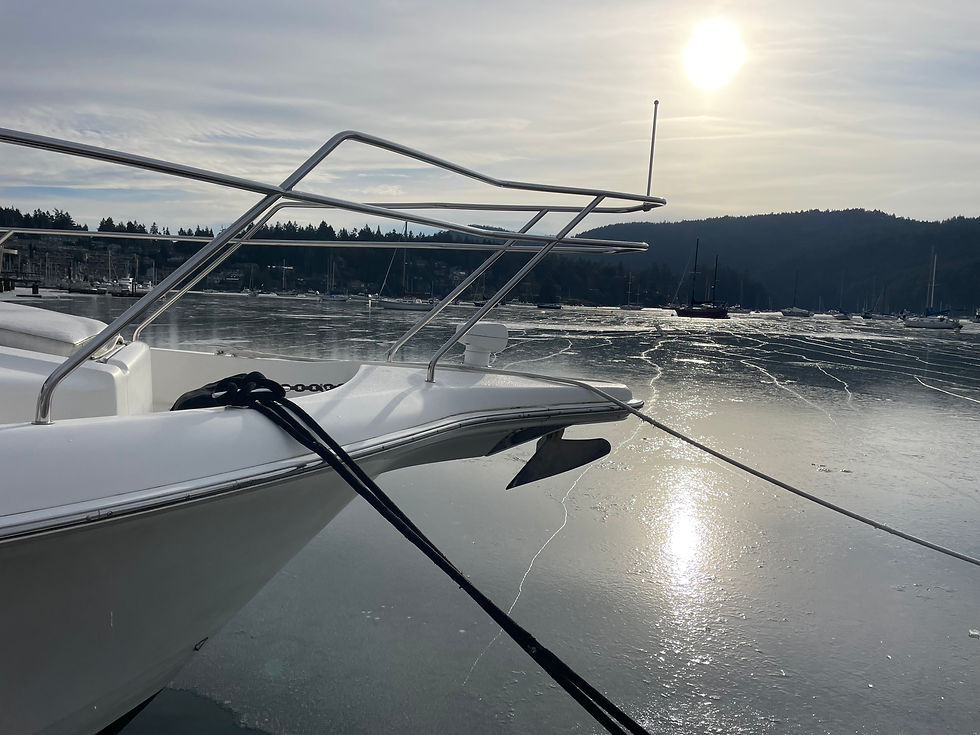Can I have that on Ice?
- Dallas Bohl
- Jan 16, 2024
- 2 min read
Updated: Jan 18, 2024
Navigating the Hidden Dangers of Ice in Brentwood Bay: Protecting Your Boat's Hull
Brentwood Bay, a picturesque location known for its serene beauty and vibrant marine life, transforms into a different landscape during colder months. The bay, typically bustling with boats and water enthusiasts, faces a unique natural phenomenon that poses significant risks to watercraft. The formation of ice, especially due to the fresh water lens that floats atop the saltwater, creates a scenario that every boat owner in the area should be wary of.
Understanding the Fresh Water Lens Effect
The phenomenon of the fresh water lens is intriguing. Fresh water, being less dense than saltwater, tends to float on the surface. In Brentwood Bay, this layer can freeze, forming a sheet of ice up to 3 inches thick. This ice layer is not uniform and often goes unnoticed by boaters, leading to unexpected encounters.
Risks to Your Boat's Hull
The primary concern with this ice formation is the potential damage to your boat's hull. The hull, the watertight body of a boat, is crucial for its buoyancy and stability. Ice, even at a thickness of 3 inches, can exert considerable pressure on the hull. This pressure can cause cracks, abrasions, and even punctures, leading to water ingress and potential sinking.
Scratches and Abrasions: The jagged edges of ice can scratch the gelcoat and paint of the hull. Over time, these abrasions can weaken the structural integrity of the hull.
Cracking and Impact Damage: As a boat moves through icy waters, the force of impact with hard ice can lead to cracks. These cracks, if not addressed, can expand and compromise the hull's strength.
Punctures: In severe cases, sharp ice can puncture the hull, an immediate and serious threat to the boat's safety.
Preventive Measures and Best Practices
Regular Inspections: Frequently inspect your boat's hull for any signs of damage. Early detection of scratches or cracks can prevent more severe problems.
Avoidance: When possible, avoid navigating in areas with known ice formation. If travel is necessary, do so during warmer parts of the day when ice may be less prevalent.
Speed Control: Reduce speed in icy conditions to minimize impact force. Slower navigation allows for better reaction time to visible ice.
Use of Ice-Proof Materials: Consider applying protective coatings to the hull that are designed to resist ice damage.
Professional Advice: Consult with local marine experts who understand the unique conditions of Brentwood Bay. They can offer tailored advice for your specific type of vessel.
Conclusion
The serene waters of Brentwood Bay hide a potential hazard that boat owners must take seriously. Understanding the risks associated with the fresh water lens and its freezing impact is crucial for maintaining the integrity of your vessel. By adopting preventive measures and staying informed, you can ensure that your boating experiences remain safe and enjoyable.









Comments